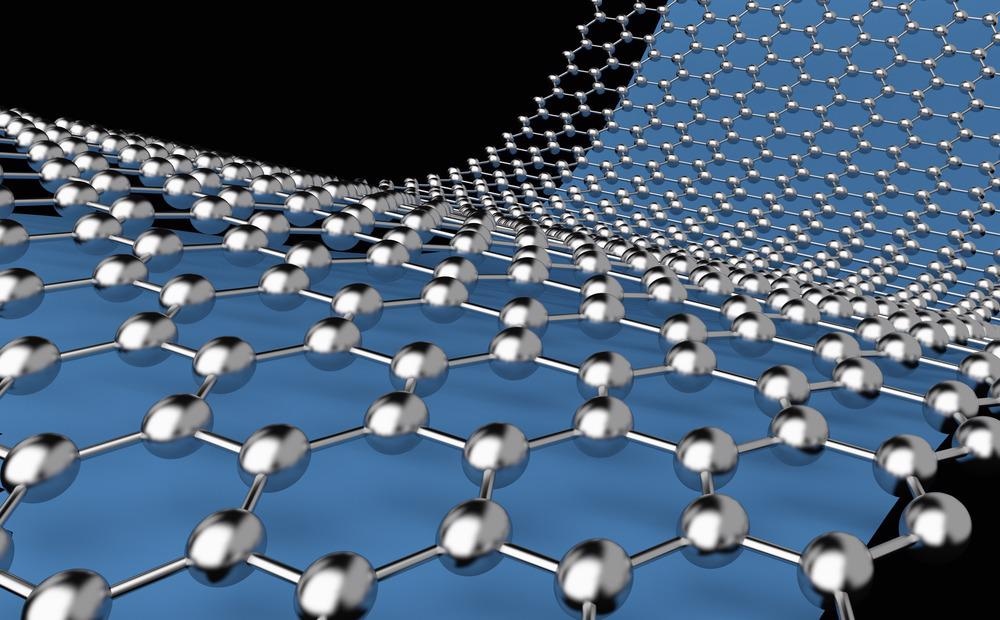A team of researchers recently submitted a paper in the journal Materials Today Physics that demonstrated the feasibility of using ferroelectric heterojunction photocatalysts to achieve enhanced photocatalytic performance.

Study: Regulation of Ferroelectric Polarization and Reduced Graphene Oxide (RGO) Synergistically Promoting Photocatalytic Performance of Bi3TiNbO9. Image Credit: Ambelrip/Shutterstock.com
Significance of Effective Photocatalysts
Photocatalysts are used extensively in organic pollutant degradation and water splitting processes. They represent a green and efficient way to address the key global challenges of environmental pollution and energy crisis.
To design highly effective photocatalysts, achieving both surface charge separation and bulk charge separation in an efficient manner is necessary.
Ferroelectric semiconductors with intrinsic spontaneous electric polarization below the Curie temperature are considered suitable for improving the separation of photogenerated carriers in photocatalysts. For instance, the ferroelectric barium titanate significantly enhanced the photocatalytic decomposition of organic dye Rhodamine B (RhB).
Bismuth titanate niobate (Bi3TiNbO9), an Aurivillius phase natural layered structural ferroelectrics, displays spontaneous anisotropic polarization below 930 degrees Celsius/Curie temperature, which is extremely conducive for spatial photogenerated carrier separation in photocatalysts.
Reduced graphene oxide (rGO), a graphene derivative, possesses certain unique characteristics of graphene, such as exceptional electron transfer properties and a large specific surface area. Moreover, rGO has been used to promote the transfer and separation of photogenerated carriers in rGO-semiconductor composite photocatalysts.
Thus, an exceptional heterojunction photocatalyst with enhanced separation of surface and bulk photogenerated carriers can be designed by coupling rGO with ferroelectric materials such as Bi3TiNbO9.
Synthesis of Bi3TiNbO9 Nano-Sheets
In this study, researchers fabricated a heterojunction photocatalyst by combining rGO with layered perovskite ferroelectric Bi3TiNbO9. The effectiveness of the fabricated photocatalyst was evaluated in terms of RhB degradation and hydrogen production during the water-splitting process. Researchers also determined the effects of rGO dosage and variable ferroelectric polarization on catalytic performance.
Bi3TiNbO9 nano-sheets were fabricated using the modified molten salt method. Titanium (IV) butoxide, niobium pentoxide, and bismuth (III) nitrate pentahydrate were used as the starting materials.
Two solutions, named A and B, were obtained by mixing niobium pentoxide and bismuth (III) nitrate pentahydrate into nitric acid for 30 minutes through magnetic stirring and dissolving titanium (IV) butoxide into ethanol, respectively.
Subsequently, solution B was added to solution A dropwise and stirred for 30 minutes. Then, concentrated ammonia was added to the mixed solution to adjust the pH of the solution between the values of nine and ten.
The resultant suspension was repeatedly washed with deionized (DI) water until the pH of the suspension became neutral. The precipitate was then dried for 12 hours at 70 degrees Celsius to obtain a precursor.
Subsequently, a mixture of sodium chloride, potassium chloride, and precursor was heated for one hour at 750 degrees Celsius to obtain calcined products. Eventually, the calcined products were cleaned with DI water to eliminate the additional molten salts and then dried to obtain final samples, designated as BTNO.
Lanthanum ion-doped BTNO (BLTNO) was also fabricated similarly to BTNO, excluding the use of stoichiometric lanthanum oxide as starting material.
Synthesis of rGO/BTNO Composites
rGO/BTNO composites were synthesized using the hydrothermal process. Initially, BTNO powder was dissolved in a mixture of ethanol and water, and then GO was added to the mixture under mild sonication for 10 minutes to obtain a suspension. Subsequently, hydrazine hydrate was added to the as-prepared suspension and the resultant suspension was heated for two hours at 80 degrees Celsius in a stainless-steel autoclave.
The GO was reduced to rGO during this process. The final rGO/BTNO grey catalysts were obtained through centrifuging, drying, and washing. A similar procedure was used to synthesize the rGO/BLTNO composites.
Several rGO/BTNO photocatalysts were fabricated with 1.5, 1.0, and 0.5 weight percentage of GO to BTNO, and the resultant photocatalysts were designated as BG1.5, BG1.0, and BG0.5.
Characterization and Evaluation of Synthesized Samples
X-ray diffraction (XRD), scanning electron microscopy (SEM), X-ray photoelectron spectroscopy (XPS), and Raman spectroscopy were used to characterize the synthesized samples. Researchers also performed electric and ferroelectric characterization to measure the electric and ferroelectric properties of the samples. Photocatalytic activity of the fabricated samples was evaluated by the RhB degradation in an aqueous solution under ultraviolet-visible light irradiation.
Ferroelectric polarization-electric field (P-E) hysteresis loops were used to characterize the ferroelectric polarization effect. The Vienna ab initio simulation package based on density functional theory (DFT) and the Perdew-Burke-Ernzerhof of generalized gradient approximation were used to perform the first-principles calculations and describe exchange-correlation potentials, respectively.
Significance of the Study
The ferroelectric rGO/BTNO composites were fabricated successfully using the two-step method. The successful fabrication was confirmed by the Raman and XRD spectra. Observations from the XPS indicated the formation of rGO/BTNO heterojunction and transfer of charges from BTNO to rGO. Effective transfer and separation of photogenerated carriers were achieved due to rGO loading in BTNO.
The BG1.0 demonstrated optimal photocatalytic performance during hydrogen production and RhB degradation compared to pristine BTNO due to the substantially enhanced light absorption range and capacity of BTNO.
DFT calculations and the P-E hysteresis loop of BLTNO and BTNO confirmed that ferroelectric polarization in BTNO was another key factor that accelerated the carrier transfer and separation.
Lanthanum-doped BG1.0 delivered a superior photocatalytic performance compared to BG1.0, owing to higher ferroelectric polarization. The synergistic effect of RGO caused surface charge separation and ferroelectric polarization accelerated bulk charge separation was responsible for the improved photocatalytic performance of the synthesized rGO/BTNO composite.
To summarize, the findings of this study demonstrated a strategy to design and develop novel photocatalysts with highly effective photogenerated charge separation for the conversion of solar energy.
Reference
Guo, C., Bai, J., Chen, C. et al. (2022) Regulation of Ferroelectric Polarization and Reduced Graphene Oxide (RGO) Synergistically Promoting Photocatalytic Performance of Bi3TiNbO9. Materials Today Physics https://doi.org/10.1016/j.mtphys.2022.100691
Disclaimer: The views expressed here are those of the author expressed in their private capacity and do not necessarily represent the views of AZoM.com Limited T/A AZoNetwork the owner and operator of this website. This disclaimer forms part of the Terms and conditions of use of this website.